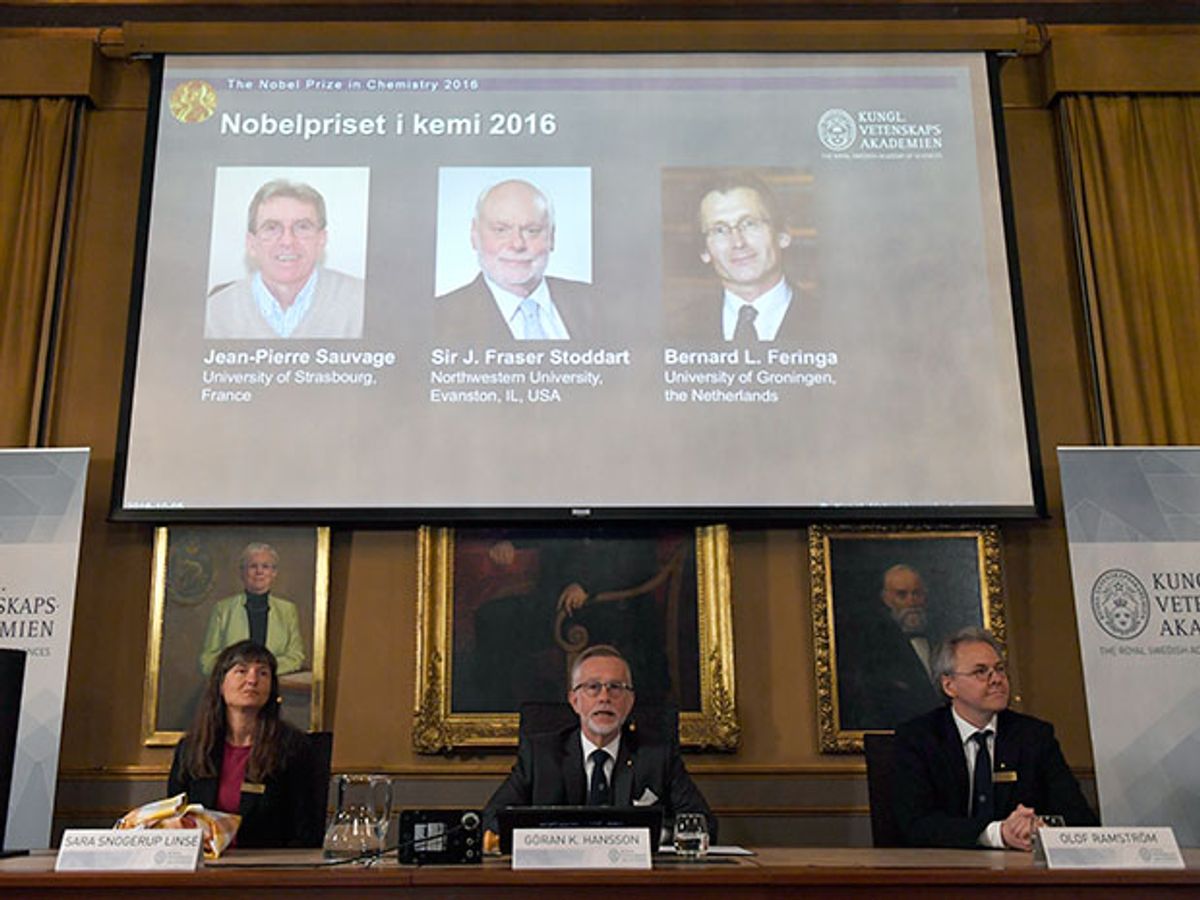In what seems to have come both as a shock to some of the recipients and a confirmation to all those who envision molecular nanotechnology as the true future of nanotechnology, Bernard Feringa, Jean-Pierre Sauvage, and Sir J. Fraser Stoddart have been awarded the 2016 Nobel Prize in Chemistry for their development of molecular machines.
The Nobel Prize was awarded to all three of the scientists based on their complementary work over nearly three decades. First, in 1983, Sauvage (currently at Strasbourg University in France) was able to link two ring-shaped molecules to form a chain. Then, eight years later, Stoddart, a professor at Northwestern University in Evanston, Ill., demonstrated that a molecular ring could turn on a thin molecular axle. Then, eight years after that, Feringa, a professor at the University of Groningen, in the Netherlands, built on Stoddardt’s work and fabricated a molecular rotor blade that could spin continually in the same direction.
The world of molecular nanotechnology is probably most familiar with Feringa’s work. He’s the one credited with being the first person to develop an actual molecular motor. In fact, IEEE Spectrum covered some of Feringa’s more recent work in 2011, when he and his team constructed a molecule that looks and seems to move like a four-wheeled car.
Of course, these molecular machines are far from having any practical, real-world applications. Despite nods in the press to nanoparticles moving through someone’s blood stream to deliver drugs, the nanogears, nanocars, and nanomachines developed by this year’s Nobel Laureates in Chemistry remain a long way from bringing to reality the primary hope of molecular nanotechnology (MNT): that these machines will work in unison to build macroscale devices. However, this Nobel Prize is as much a spur to future research as it is a recognition of what has already been achieved.
Speaking of the Nobel committee’s selection, Donna Nelson, a chemist and president of the American Chemical Society told Scientific American: “I think this topic is going to be fabulous for science. When the Nobel Prize is given, it inspires a lot of interest in the topic by other researchers. It will also increase funding.” Nelson added that this line of research will be fascinating for kids. “They can visualize it, and imagine a nanocar. This comes at a great time, when we need to inspire the next generation of scientists.”
Indeed, nanomachines do capture our imagination and have played a role in an increasing number of sci-fi movies and novels. However, experimental research in adapting these nanogears and nanomachines into the kind of MNT manufacturing that is envisioned in these works of fiction seems to still be lacking. MNT supporters have identified a lack of funding as one of the main obstacles. Whether this latest Nobel Prize will spur some funding bodies to open up the purse strings to realize the broader potential that this initial work seems to promise remains a question that only time can answer.
Dexter Johnson is a contributing editor at IEEE Spectrum, with a focus on nanotechnology.



